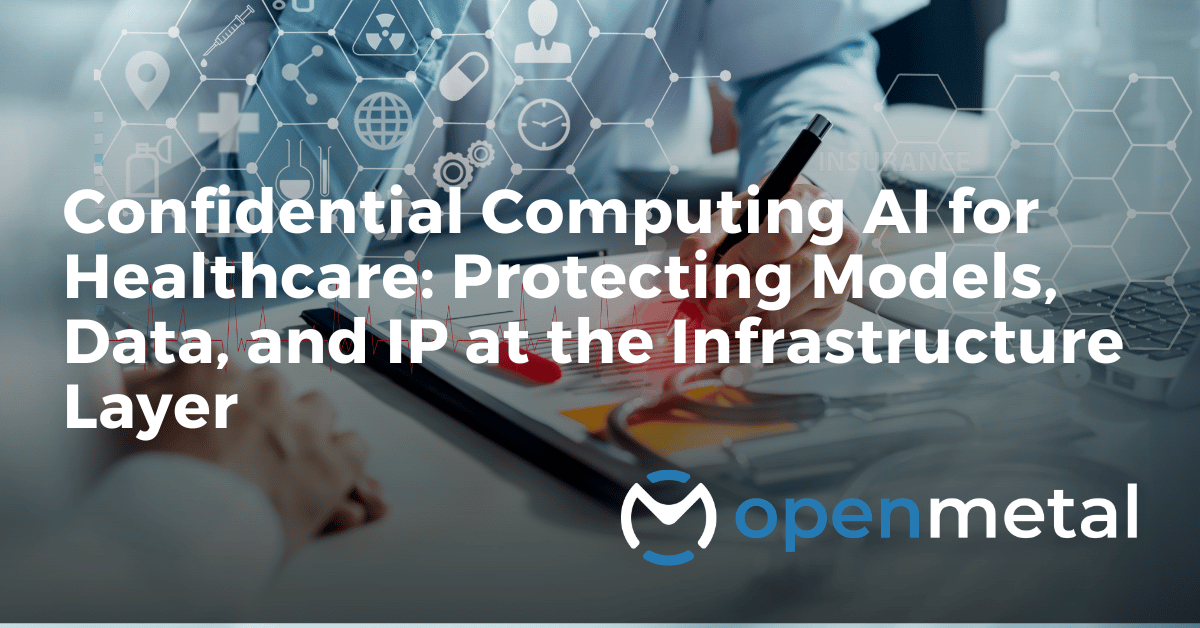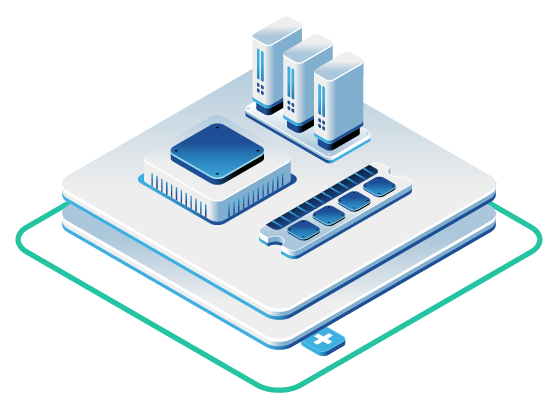
Healthcare AI is transforming patient care, but you face a unique challenge: how do you train models on sensitive patient data while maintaining HIPAA compliance and protecting proprietary algorithms? The answer lies in confidential computing infrastructure—a hardware-based approach that encrypts data during processing, not just at rest or in transit.
If you’re building AI systems that handle protected health information (PHI), confidential computing provides the security foundation you need. Let’s explore how this technology works and why it’s becoming the standard for healthcare AI workloads.
The Healthcare AI Security Dilemma
You’re dealing with three types of sensitive assets in healthcare AI:
- Patient Data (PHI): Medical records, imaging data, genomic sequences
- Proprietary Models: Your trained AI algorithms representing millions in R&D investment
- Inference Results: Diagnostic predictions and treatment recommendations
Traditional cloud infrastructure leaves these assets vulnerable during processing. Even with encryption at rest and in transit, your data becomes exposed when loaded into memory for computation. This vulnerability has kept many healthcare organizations from fully embracing cloud-based AI training.
What Makes Confidential Computing Different
Confidential computing uses hardware-based Trusted Execution Environments (TEEs) to create secure enclaves where your data remains encrypted even during processing. Technologies like Intel TDX (Trust Domain Extensions) and AMD SEV create isolated execution environments that protect against:
- Hypervisor attacks
- Malicious insiders
- Physical access threats
- Side-channel attacks
According to Intel’s research on privacy-preserving healthcare innovation, confidential computing enables secure multi-party computation, allowing hospitals to collaborate on AI models without exposing patient data.
Real-World Healthcare AI Use Cases
1. Federated Learning for Multi-Hospital Studies
You can train models across multiple healthcare systems without centralizing patient data. Each hospital’s data remains within its confidential computing enclave, with only model updates shared between institutions. This approach has proven particularly valuable for rare disease research where individual hospitals lack sufficient case volumes.
2. Third-Party Model Validation
When you need external validation of your AI models for FDA approval, confidential computing allows auditors to test your algorithms without accessing the underlying code or training data. Microsoft’s confidential AI framework demonstrates how this preserves both model IP and test dataset privacy.
3. Real-Time Inference on Edge Devices
Deploy AI inference capabilities to edge locations like imaging centers or ambulances while maintaining end-to-end encryption. Patient data never leaves the secure enclave, even during real-time diagnostic predictions. Emerging technologies like AI tools in telehealth are expanding how healthcare professionals interact with data while enhancing productivity and patient outcomes.
4. Genomic Analysis Pipelines
Process whole genome sequences—some of the most sensitive personal data—without exposing genetic information to infrastructure providers or potential breaches. TechRepublic identifies genomic analysis as one of the top five confidential computing applications in healthcare.
5. Clinical Trial Data Processing
Pharmaceutical companies can analyze trial data from multiple sites without violating patient privacy agreements or exposing proprietary drug formulations.
Implementing Confidential Computing for Healthcare AI on OpenMetal
OpenMetal’s bare metal infrastructure provides the foundation for deploying confidential computing workloads. Here’s how to get started:
Step 1: Choose Your Hardware Configuration
Select servers with confidential computing capabilities:
- Large V4 Storage Servers: High-capacity storage for medical imaging datasets
- XL V4 Servers: Balanced compute and memory for inference workloads
- XXL V4 Servers: Intel Xeon processors with TDX support, ideal for large-scale model training
Step 2: Deploy Your Confidential Computing Environment
Follow OpenMetal’s guide on deploying confidential computing workloads to set up your secure enclaves:
- Enable Hardware Security Features
- Activate Intel TDX or AMD SEV in BIOS
- Configure memory encryption settings
- Set up attestation services
- Install Confidential Container Runtime
- Deploy Kata Containers or similar confidential computing runtime
- Configure container policies for healthcare compliance
- Set up secure key management
- Implement Data Pipeline Security
- Encrypt data before ingestion
- Use secure channels for data transfer
- Implement audit logging for compliance
Step 3: Optimize for AI Workloads
OpenMetal’s guide to confidential computing for AI training provides detailed optimization strategies:
- Memory Management: Configure large memory pools for in-enclave model training
- GPU Integration: Use confidential computing-enabled GPUs when available
- Storage Architecture: Leverage Ceph storage clusters for distributed, encrypted data access
The Business Case: Why Healthcare Organizations Choose OpenMetal
Cost Efficiency
Traditional cloud providers charge premium rates for confidential computing instances—often 50-100% more than standard VMs. OpenMetal’s transparent bare metal pricing means you pay only for the hardware you use, with no hidden fees for security features.
Compliance Advantages
- HIPAA: Hardware-based encryption satisfies technical safeguards
- GDPR: Data residency and processing controls meet EU requirements
- FDA: Auditable infrastructure for AI/ML medical device submissions
Performance Benefits
Running on bare metal infrastructure eliminates virtualization overhead, delivering:
- 15-30% better training performance
- Predictable latency for real-time inference
- Direct hardware access for optimized workloads
Getting Started with Your Healthcare AI Project
Phase 1: Proof of Concept (Weeks 1-4)
- Deploy a single confidential computing node
- Test data ingestion and encryption workflows
- Validate performance benchmarks</li>
Phase 2: Pilot Deployment (Months 2-3)
- Scale to multi-node cluster
- Implement production security policies
- Conduct compliance audit
Phase 3: Production Rollout (Months 4-6)
- Deploy full Hosted Private Cloud environment
- Integrate with existing healthcare systems
- Enable multi-site collaboration features
Security Best Practices for Healthcare AI
Data Governance
- Implement role-based access controls at the infrastructure layer
- Use separate enclaves for different data sensitivity levels
- Maintain audit trails for all data access
Model Protection
- Store model weights in encrypted format
- Use attestation to verify training environment integrity
- Implement version control with cryptographic signatures
Operational Security
- Regular security updates to confidential computing firmware
- Continuous monitoring of enclave health
- Incident response procedures specific to healthcare data
The Future of Secure Healthcare AI
As healthcare organizations process increasing volumes of sensitive data, confidential computing becomes not just an option but a requirement. The technology enables use cases previously impossible due to privacy concerns:
- Cross-border medical research collaborations
- AI-powered precision medicine at scale
- Real-time population health monitoring
- Secure medical IoT deployments
By building on OpenMetal’s confidential computing infrastructure, you position your organization at the forefront of secure healthcare innovation.
Take the Next Step
Ready to explore how confidential computing can transform your healthcare AI initiatives? The combination of hardware-based security, bare metal performance, and cost-effective infrastructure makes OpenMetal the ideal platform for your sensitive workloads.
Start with our comprehensive guides on confidential computing benefits to understand the full potential of this technology for your healthcare AI projects.
Read More on the OpenMetal Blog


































